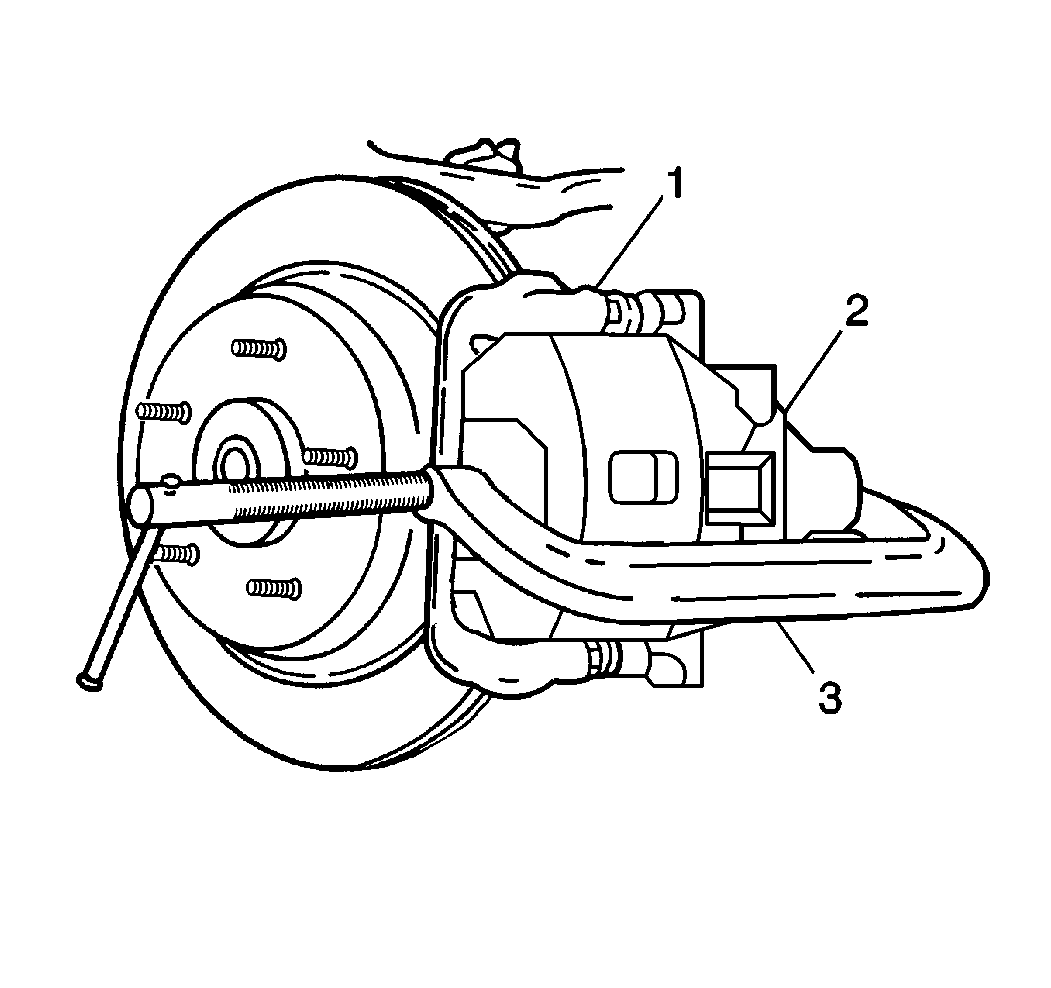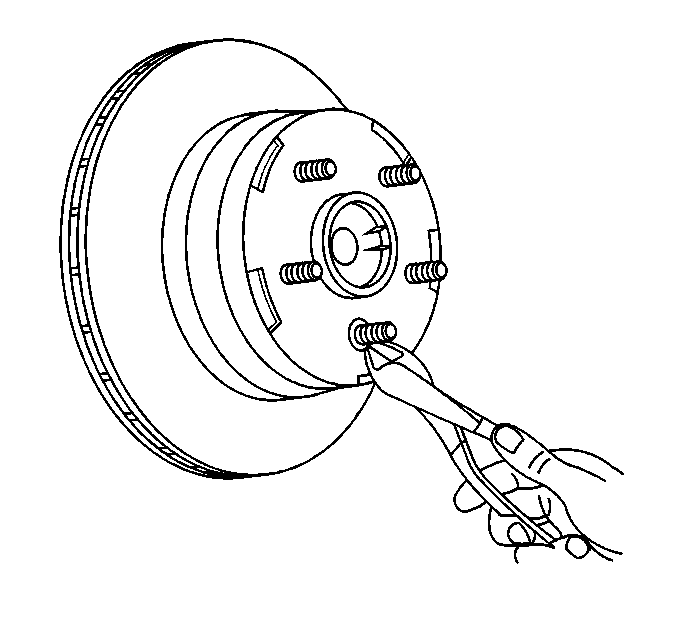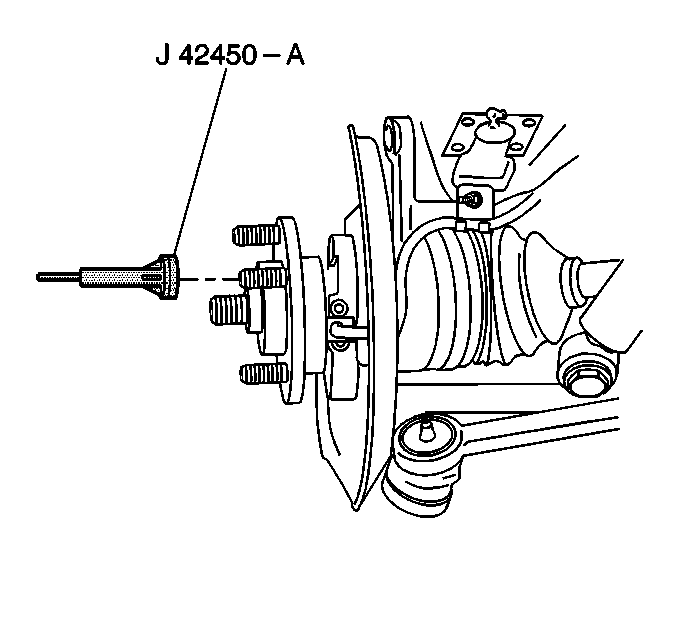Tools Required
J 42450-A Wheel
Hub Cleaning Kit
Removal Procedure
The brake rotor can be accessed by removing the caliper and the caliper
bracket as an assembly.

- Inspect the fluid level in the brake
master cylinder.
- If the brake fluid level is midway between the maximum-full point
and the minimum allowable level, no brake fluid needs to be removed from the
reservoir before proceeding.
- If the brake fluid level is higher than midway between the maximum-full
point and the minimum allowable level, remove brake fluid to the midway point
before proceeding.
- Raise and suitably support the vehicle. Refer to
Lifting and Jacking the Vehicle
in General Information.
- Remove the tire and wheel assembly. Refer to
Tire and Wheel Removal and Installation
in Tires and Wheels.
- Compress the front caliper piston.
| 6.1. | Install a large C-clamp over the top of the caliper housing and
against the back of the outboard pad. |
| 6.2. | Slowly tighten the C-clamp until the piston pushes into the caliper
bore enough to slide the caliper and bracket off the rotor. |
| 6.3. | Remove the C-clamp from the caliper. |
| | Important: Do not disconnect the brake hose from the caliper.
|
| | Notice: Support the brake caliper with heavy mechanic wire, or equivalent,
whenever it is separated from its mount and the hydraulic flexible brake hose is still connected. Failure to support the caliper in this manner will cause the flexible brake hose to bear the weight of the caliper, which may cause damage to the brake hose and
in turn may cause a brake fluid leak.
|
| 6.4. | Remove the brake caliper bracket mounting bolts. |
- Remove the brake caliper and the brake caliper bracket as an assembly.
- Suspend the caliper and bracket assembly.

- Remove and dispose of the sheet metal
rotor retainers (if necessary).
- Remove the rotor.
Installation Procedure
Notice: Whenever the brake rotor has been separated from the wheel bearing flange,
clean any rust or foreign material from the mating surface of the rotor and
flange with the J 42450 hub cleaning kit. Failure to do
this may result in increased lateral runout of the rotor and brake pulsation.

- Use the J 42450-A
to clean the hub flange.
- Install the rotor.
- Verify that the brake pads are in place.
- Install the brake caliper and brake caliper bracket assembly.
Notice: Use the correct fastener in the correct location. Replacement fasteners
must be the correct part number for that application. Fasteners requiring
replacement or fasteners requiring the use of thread locking compound or sealant
are identified in the service procedure. Do not use paints, lubricants, or
corrosion inhibitors on fasteners or fastener joint surfaces unless specified.
These coatings affect fastener torque and joint clamping force and may damage
the fastener. Use the correct tightening sequence and specifications when
installing fasteners in order to avoid damage to parts and systems.
- Install the caliper
bracket mounting bolts.
Tighten
Tighten the caliper bracket mounting bolts to 180 N·m (133 lb ft).
- Install the tire and wheel assembly. Refer to
Tire and Wheel Removal and Installation
in Tires and Wheels.
- Lower the vehicle.
- With the engine OFF, gradually apply the brake pedal approximately
2/3 of it's travel distance.
- Slowly release the brake pedal.
- Wait 15 seconds, then repeat steps 7-8 until a firm brake
pedal is obtained. This will properly seat the brake caliper pistons and brake
pads.



